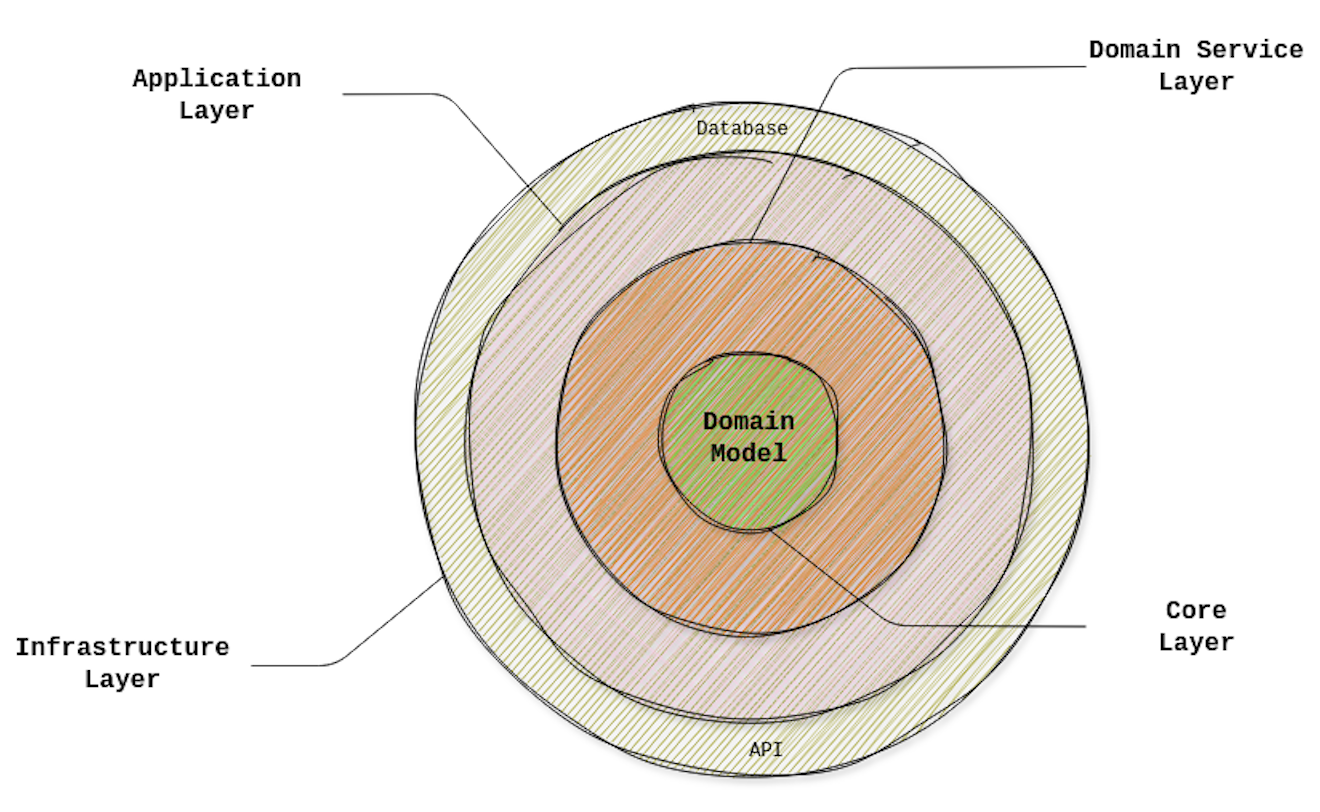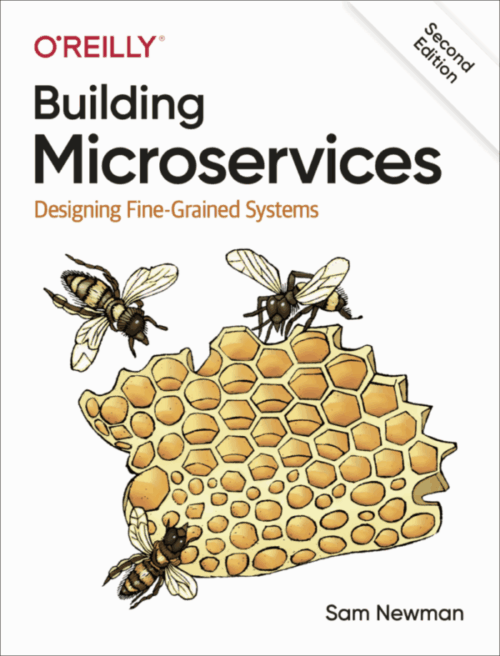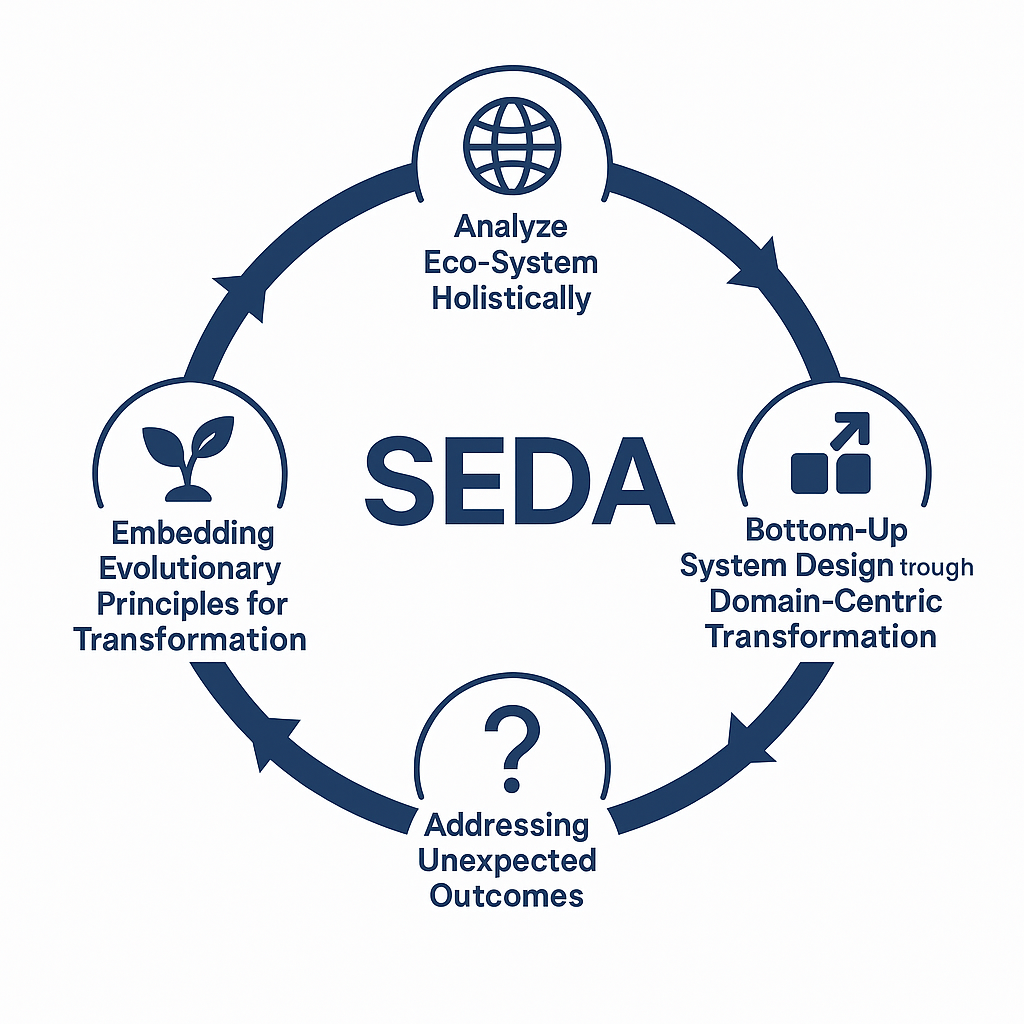Onion Architecture is a software architecture pattern that focuses on separation of concerns and dependency inversion to make systems more maintainable and testable. Introduced by Jeffrey Palermo, it addresses common issues found in traditional layered architectures, like tight coupling and difficulty in testing and used for building enterprise application which is compatible with Domain-Driven Design approach too.
Onion Architecture Overview
The architecture is called the Onion because of its layered structure, just like an onion. At the heart of it is the most independent part, while each outer layer builds on the ones inside it (but never the other way around). As a matter of fact, the layers in Onion Architecture are separated which promotes long-term flexibility and maintainability.
The fundamental rule is that all code can depend on layers more central, but code cannot depend on layers further out from the core. In other words, all coupling is toward the center. This architecture is unashamedly biased toward object-oriented programming, and it puts objects before all others.
Here’s a quick breakdown of the layers, starting from the innermost and moving outward.
Core Layer – Domain Model Layer
In Onion Architecture, the Core sits right at the center. it’s the heart of the application, where the actual business logic lives. This layer holds the key building blocks of the system, like core entities, value objects, and the rules that define how everything is supposed to work.
What makes the Core Layer so important is that it doesn’t depend on anything else; not the infrastructure, not application services, and definitely not external tools like databases or frameworks.
Because of that, it’s clean, isolated, and super easy to test. It stands on its own as a clear representation of the business domain, allowing developers to focus purely on modeling business rules without getting tangled up in technical details.
Domain Service Layer
The Domain Services Layer in Onion Architecture acts as a bridge for domain logic that doesn’t naturally fit within a single entity or value object. In real-world business systems, some operations involve multiple entities or require orchestration that transcends the responsibility of a single object.
A key role of the Domain Services Layer is to define interfaces that describe these domain-level operations, ensuring that business behavior is explicitly modeled and understood. These interfaces are implemented elsewhere, often in the infrastructure or application layer, allowing the domain to stay free of external dependencies.
Application Services Layer
The Application Services Layer in Onion Architecture plays a key role in coordinating tasks and making sure business rules are followed throughout the system. Think of it as the middleman between the core domain logic and the outside world. it manages data flow, brings together different domain operations, and ensures that each use case runs smoothly from start to finish.
While domain entities and services handle the specific rules and behaviors of the business, the application layer focuses on how everything fits together to respond to user actions or internal system processes. Importantly, this layer depends on the core domain but stays completely separate from technical details like databases, APIs, or user interfaces.
Infrastructure Layer
The Infrastructure Layer is the outermost layer in Onion Architecture, and its main job is to handle the technical details; basically, all the behind-the-scenes work that supports the core of our enterprise application.
This is where things like repositories, logging, email sending, file storage, and other external systems come into play. The key idea is that the inner layers define what needs to be done, and the infrastructure layer figures out how to do it.
We’ll typically connect to databases, web frameworks, external APIs, messaging systems, and more in this layer. Since the infrastructure layer depends on the inner layers, it follows the Dependency Inversion Principle. That means you can change technologies without messing with your core logic.
Pros & Cons

Onion Architecture is built around a Domain-Centric Design approach, placing business logic at the core. This makes it easier to create software that closely reflects real-world rules and processes.

One of the main challenges of Onion Architecture is the steep learning curve. It requires a solid understanding of Domain-Driven Design principles, dependency inversion, and clean architecture concepts.

This architectural pattern is a natural fit for Domain-Driven Design. Its clean structure aligns well with DDD concepts such as entities, value objects, aggregates, and more.

One downside of Onion Architecture is its initial complexity. It requires more boilerplate code and abstraction early on, which can make it feel like over-engineering, especially for simple CRUD applications.
Synergy of Onion Architecture and Domain-Driven Design
Onion Architecture is a software architecture pattern that promotes a clear separation of concerns, emphasizes dependency inversion, and places the domain logic at the core of the application.
Domain-Driven Design, on the other hand, is a design approach focused on deeply understanding and modeling the business domain. It uses rich domain models, relies on a shared, ubiquitous language, and encourages close collaboration with domain experts.
When combined, Onion Architecture and DDD help create systems that are maintainable, testable, flexible, and closely aligned with real-world business rules.
The table below explores the intersection of architecture and design, with a focus on how Onion Architecture aligns with Domain-Driven Design.
| Onion Architectural Style | Domain-Driven Design Concept |
|---|---|
| Domain Layer (Core + Service) | Entities, Value Objects, Aggregates and Domain Events |
| Application Layer | Use Cases, Application Services and Repositories |
| Infrastructure Layer | ❌ Not part of Domain-Driven Design |
Sample Code
To gain better understanding of Onion Architecture and Domain-Driven Design combination in action, take a look at the provided simple example in this repository.





